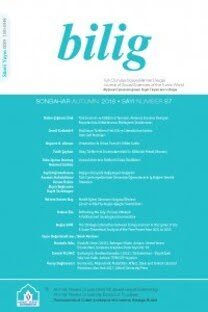Edebi Eserlerin Sadeleştirilerek Yeniden Yayımı Üzerine Uygulamalı Bir Örnek: Nesl-i Ahir
7 Eylül 1908 - 5 Mart 1909 tarihleri arasında Sabah Gazetesi’nde tefrika edilmiş olan Nesl-i Ahîr, yazarın sağlığında ne kitap halinde yayımlanmış ne de sadeleştirilmiştir. Eserin elimizdeki tek nüshası 1990 yılında Şemsettin Kutlu tarafından Son Kuşak alt başlığı ile hazırlanan sadeleştirilmiş baskısıdır. Ancak Nesl-i Ahîr’in kitap halindeki bu tek baskısında, yeni harflere aktarma ve sadeleştirme işlemi sırasında orijinal metinden çok uzaklaşıldığı ve bu baskıyı hazırlayan Şemsettin Kutlu’nun tasarrufuyla Halit Ziya’nın kaleminden çıkan metnin büyük ölçüde değiştirildiği görülmektedir. Kimsenin bir edebî metne müdahale ve özellikle yazarın üslûbunu değiştirme hakkı olmadığı gibi “büyük bir üslûpçu” olan Halit Ziya’nın sağlığında kitap halinde yayımlanmamış olsa bile bir eserinin yıllar sonra yayıma hazırlanırken böyle bir müdahaleye maruz kalması çok daha vahimdir. Nesl-i Ahîr’in bu sadeleştirilmiş baskısı ne yazık ki edebiyat araştırmacıları ve diğer disiplinlerin uzmanları tarafından bilimsel anlamda kullanılabilecek nitelikte olmadığı gibi sıradan okuyucu için de rahatlıkla takip edilebilecek bir anlatımdan uzaktır. “Edebiyat biliminin ilk görevlerinden birisi malzemelerinin bir araya getirilmesi”, “metnin sahihliğinin” ortaya çıkarılmasıdır. Aksi takdirde “edebî eserlerin eleştirel tahlili ve tarihî çerçevesi içinde anlaşılması çok zorlaşabilir. Bu çalışmada halen Nesl-i Ahîr’in mevcut tek baskısı ile yazarı tarafından tefrika halinde gazetede bırakılmış nüshaları arasındaki fark ortaya koyulacak ve bu suretle orijinal metne zarar vermemek adına bir metnin edisyonunun zorluğuna ve ne kadar ciddi bir çalışmayı gerektirdiğine dikkat çekilecektir.
Nesl-i Ahir as an Example for the Publication of Simplified Editions of Literary Texts
Nesl-i Ahîr, serialized in Sabah between 7 September 1908 and 5 March 1909, was neither simplified nor published as a book during its writer’s lifetime. The only extant version of the work in book form is the simplified edition prepared by Şemsettin Kutlu in 1990 and published with the subtitle, Son Kuşak. Unfortunately, in simplifying the original and writing it in the letters of the new alphabet, Şemsettin Kutlu has followed the original text very loosely and made significant changes in it. The end result has been an edition highly foreign to Halit Ziya’s original work. Nobody has the right to meddle this way with a literary text, and it is even sadder that the work of a master of style like Halit Ziya is exposed to this kind of treatment years later. This way of editing is also not justified by the fact that Halit Ziya’s serialized work was not published as a book during his own lifetime. The simplified edition of Nesl-i Ahîr is regrettably not of a quality that can meet the needs and expectations of researchers in literature or other disciplines. Nor does it have a style that is clear and coherent enough for the lay reader to follow with relative ease. One of the major tasks of the science of literature is to “bring its materials together” and to reveal “the authenticity of the text”. Otherwise, it may become rather difficult to “analyze literary works critically” and understand them within their historical framework. This study points out the significant differences between the only extant book edition of Nesl-i Ahîr and the serialized copies that can be found in the newspaper archives. This way, it aims to draw attention to the difficulties involved in proper editing and the amount of meticulous work needed so as not to harm and alter the original text.
